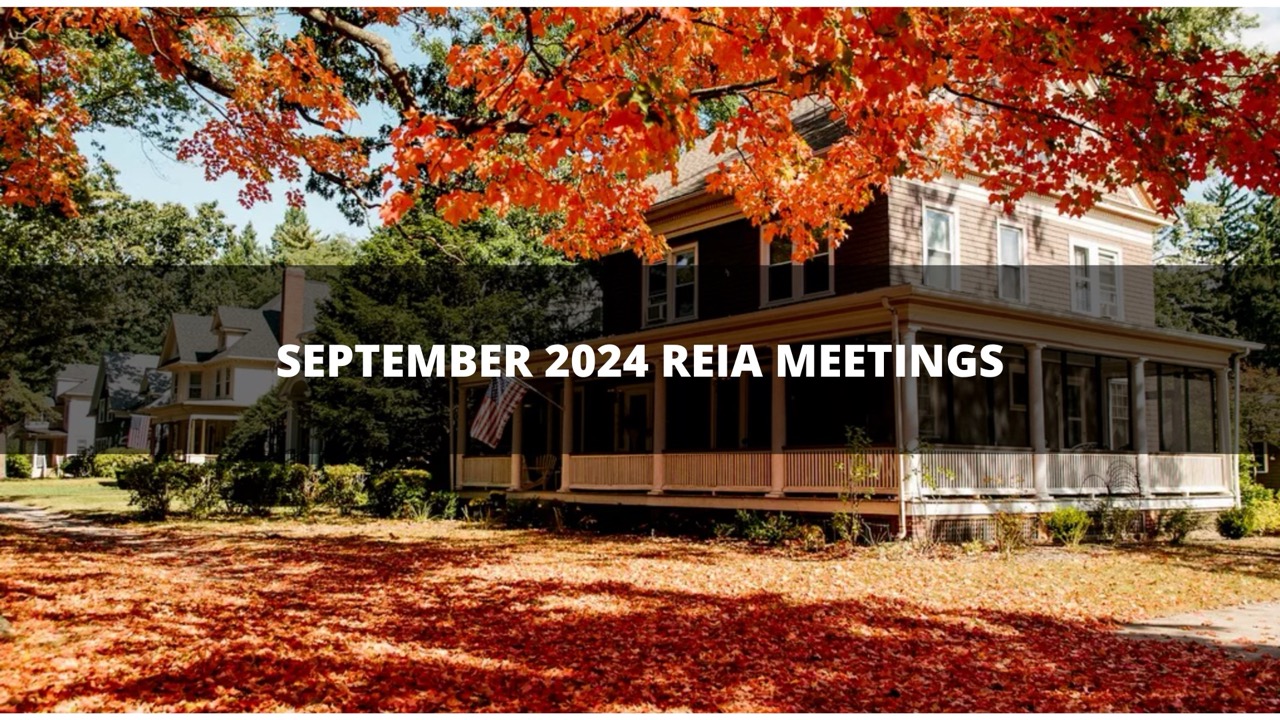The Basics of Foreclosure
During the mortgage crisis in 2008, I had a lot of time to think about what real estate investing tips would be useful, and I know the basics of real estate foreclosure are always pertinent.
In order to invest profitably in a pre-foreclosure market, it’s necessary to understand all aspects of the foreclosure process and how to operate in each of the stages within that process. It’s also necessary to understand what options are available to homeowners so you can see the process through their eyes and help them to make the best decision possible as well as the best one for yourself.
Let’s start today by looking at the first two stages of foreclosure — pre-foreclosure and foreclosure.
As an investor, you can operate in any three of these stages, but, as you’ll see, the pre-foreclosure stage offers the greatest profit opportunities and the least amount of hassles.
The Pre-Foreclosure Stage
A pre-foreclosure sale takes place between the time when the lender files suit and when the property is scheduled to be sold at a public foreclosure action or a trustee’s sale. Here’s an overview of the benefits of buying pre-foreclosure properties so you can contrast them with the disadvantages of the foreclosure and REO stages.
Benefits of Pre-Foreclosure
- Deep discounts
- Ability to research and inspect property/more accurate value estimates
- Ability to avoid the potentially expensive bidding process
- Ability to structure sales agreements in a creative fashion
- Less hassle from third parties (lenders, etc.)
- The potential for minimum cash outlay
The Foreclosure Stage
When institutions (banks, lenders, etc.) lend money to individuals for the purchase of a home or other property, they naturally expect to be paid back. They’re in the business of lending money to make a profit. When borrowers (mortgagors) fail to meet their mortgage obligations, lenders want the property returned so they can re-sell it to others for a profit or at least reduce their losses. They regain the property through the foreclosure process.Of course, both mortgagors and lenders will do their utmost to work out an agreement that will allow people to keep their homes and the lender to keep receiving payments. In addition, neither the mortgagors nor the lenders want the legal complications of the foreclosure process. Unfortunately for them – but fortunately for you! – they can’t always work out an agreement, and the lenders have to initiate foreclosure proceedings. So, how is the foreclosure process begun and what’s involved in it? It’s important for you to be aware that every state and county has different rules and regulations that you’ll need to learn well. Otherwise, you may miss something or make a mistake than can cost you money. However, in general, every state within the U.S. uses one of two types of foreclosure — judicial and non-judicial.
Judicial Foreclosures
In states with this system, foreclosure can only take place through court action. The process usually begins when the home owner falls behind on his or her mortgage payments due to one of several reasons (divorce, health issues, loss of job, etc.). Typically, the foreclosure process goes like this:
- A lender files a lawsuit with the appropriate court to foreclose on the mortgage or deed of trust.
- The borrower must respond to the lender’s “complaint.”
- A court hearing date is set.
- During the hearing, the judge evaluates the complaint and either dismisses it or orders foreclosure of the loan.
- If the decision is for foreclosure, the judge then orders that a public foreclosure auction sale be held on a specified date.
- The public foreclosure auction date is then advertised to the public.
- At the auction, the property is sold to the highest bidder. Or, if there’s no acceptable bid, the property reverts back to the lender.
- A “deficiency judgment” may be levied against the borrower. This is a personal judgment against the borrower for the remaining balance on the loan after a foreclosure sale.
- After the sale, the borrower does have the opportunity to exercise “statutory redemption rights.” That is, within a specified amount of time, he or she can regain the property by paying all costs and interest (in addition to the mortgage debt) to the lender.
- If the borrower does not exercise statutory redemption rights within the specified amount of time, a sheriff’s deed or certificate of title is given to the highest bidder.
Non-Judicial Foreclosures
In states with this process, the foreclosing lender makes use of the “power of sale” covenant specified in the mortgage or trust deed. This is the right of the lender to force the sale of a property without judicial action. Typically, this is how the process works:
The lender files a default notice with the appropriate office (county recorder, public record, etc.).
- A trustee’s sale date is set.
- The sale is publicly advertised.
- At auction, the property is sold to the highest bidder. Or, it’s taken back by the lender if no bids are acceptable.
- As with judicial foreclosures, the borrower may exercise statutory redemption rights after the sale.
- After statutory redemption rights have expired, the deed is given to the highest bidder.
At this point, you may be thinking to yourself, “I could pick up some pretty good bargains at an auction sale.” And, it’s true — you can! However, an auction has several disadvantages that make it a poor choice compared to pre-foreclosure bargains.
Disadvantages of an Auction Sale
Greater competition – by definition, auctions are public which means everybody and his brother knows about the sale and can enter the bidding. This can drive the price up and have two potential negative results. One, it can put the property beyond your means. Or, two, if you do win the property, it may well reduce the profit you can earn.
Fixed sales terms – at a public auction, there’s no opportunity to negotiate sales terms unlike in the pre-foreclosure stage. You have no flexibility and no opportunity to negotiate terms that could earn you more profit.
No inspections – at a foreclosure auction, you buy the property “as is.” You have no opportunity to inspect it in order to discover any defects (leaky roofs, etc.) that could end up costing you a lot of money.
Proof of funds is required – if you’re a bidder at a public auction, you’ll be required to show proof that you have the money necessary to complete the purchase. For example, you may be required to have cash or a cashier’s check for X amount of your winning bid (5%, 10%, etc.). Then, it’s likely that you’ll be required to pay the rest of your bid amount within a short period of time as well as title transfer fees. (This requirement keeps non-qualified bidders from slowing down the process.)
No leverage – since auctions are strictly “cash and carry,” you’re not able to use the opportunity to line up a lender to finance the balance of the sale price. If you’re new to investment and have little free cash available, this means you’re effectively shut out of the auction process.
You may not be able to insure the title – title insurers do not like risk, and most of them consider foreclosed properties to be an unacceptable risk. They’ll take a very close look at such property titles and, if they find any errors, they may well refuse to insure them. This, in turn, may leave you with unacceptable risk.
Potential for bidder collusion – there’s always the possibility that a group of bidders may meet before an auction sale and determine a maximum bidding amount on a desired property. This has the effect of restricting competition among other, less well-heeled, bidders. The result? You don’t get the property and end up wasting your time.
Poor property condition – after you win a property, you may find it’s in such poor condition that no property or casualty firms want to insure it.
The possibility of unfriendly occupants – if the property is occupied by unfriendly owners or tenants, you may be forced to evict them. This can be expensive and time-consuming. Basically, it means you can’t do anything with the property until the occupants are ousted — not a good scenario for making a profit!
The “right of redemption” obstacle – from earlier in this email, you’ll remember that owners have the right to redeem their property after the sale within a specified amount of time. The redemption period varies with the state and can range from anywhere from 30 days to a year. So, this means you run the risk of losing the property after having bought it.
Technical flaws in the foreclosure process – errors can abound in the foreclosure sales procedure — misspelled names, wrong street addresses, math errors, failure to adhere strictly to procedures, etc. This opens up the possibility for the previous owner to appeal for an overturn of the sale. Resolving these issues can take months and add up to a big headache for you in terms of time and money.
Well, that’s all for now.
To Fun, Fortune, & Freedom!
Tim Mai
Lead Mentor
MyHouseDeals.com
P.S. Don’t forget to read the rest of this foreclosure series. Click here to read Part 2!





